 Santa Claus, Winnie the Pooh®, and Shrek® … what do these three characters have in common? You probably know them for being jolly and for having extra fat around their waists, also known as “abdominal obesity.” Although this may be cute in fairy tales or movies, abdominal obesity can be a serious health risk in the real world. Abdominal obesity, also known as central adiposity, is a buildup of fat tissue around the waist or midsection. It is a risk factor for certain health conditions. Read this 4-page fact sheet to find out more about the health risks of abdominal obesity and ways to prevent or treat it. Written by Erica Bub, Karla Shelnutt, and Gail Kauwell, and published by the UF Department of Family Youth and Community Sciences, February 2013.
Santa Claus, Winnie the Pooh®, and Shrek® … what do these three characters have in common? You probably know them for being jolly and for having extra fat around their waists, also known as “abdominal obesity.” Although this may be cute in fairy tales or movies, abdominal obesity can be a serious health risk in the real world. Abdominal obesity, also known as central adiposity, is a buildup of fat tissue around the waist or midsection. It is a risk factor for certain health conditions. Read this 4-page fact sheet to find out more about the health risks of abdominal obesity and ways to prevent or treat it. Written by Erica Bub, Karla Shelnutt, and Gail Kauwell, and published by the UF Department of Family Youth and Community Sciences, February 2013.
http://edis.ifas.ufl.edu/fy1347
Author: dihagan
Raising Healthy Children: Milk and Egg Allergies (FCS80020/FY1346)
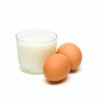 Milk and eggs are familiar, nutritious foods that most children enjoy, but these foods can cause problems for children with milk and egg allergies. If your child is allergic to milk or eggs, you need to consider steps you and your child can take to avoid these foods, and you need to make sure your child gets enough of the proper nutrients, especially if certain foods are removed from his or her diet. This 5-page fact sheet will help you learn more about milk and egg allergies and how to make sure your allergic child stays safe. Written by Jonathan Holzinger, Karla Shelnutt, and Gail Kauwell, and published by the UF Department of Family Youth and Community Sciences, February 2013.
Milk and eggs are familiar, nutritious foods that most children enjoy, but these foods can cause problems for children with milk and egg allergies. If your child is allergic to milk or eggs, you need to consider steps you and your child can take to avoid these foods, and you need to make sure your child gets enough of the proper nutrients, especially if certain foods are removed from his or her diet. This 5-page fact sheet will help you learn more about milk and egg allergies and how to make sure your allergic child stays safe. Written by Jonathan Holzinger, Karla Shelnutt, and Gail Kauwell, and published by the UF Department of Family Youth and Community Sciences, February 2013.
http://edis.ifas.ufl.edu/fy1346
Raising Healthy Children: Packing a Peanut-Free Lunch (FCS80019/FY1345)
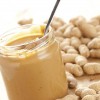 Peanut butter is a staple in the diets of many children, but it can cause serious problems for those with a peanut allergy. Knowing how to identify foods that contain peanuts, what to pack for school lunches, and how to reduce accidental contact with peanuts will help keep children with peanut allergies safe when they are away from home. This 5-page fact sheet was written by Sarah Schmidt, Karla Shelnutt, and Gail Kauwell, and published by the UF Department of Family Youth and Community Sciences, February 2013.
Peanut butter is a staple in the diets of many children, but it can cause serious problems for those with a peanut allergy. Knowing how to identify foods that contain peanuts, what to pack for school lunches, and how to reduce accidental contact with peanuts will help keep children with peanut allergies safe when they are away from home. This 5-page fact sheet was written by Sarah Schmidt, Karla Shelnutt, and Gail Kauwell, and published by the UF Department of Family Youth and Community Sciences, February 2013.
http://edis.ifas.ufl.edu/fy1345
Tropical Soda Apple Leaf Beetle, Gratiana boliviana Spaeth (Insecta: Coleoptera: Chrysomelidae: Cassidinae) (EENY543/IN974)
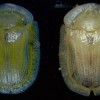 Tropical soda apple is a prickly shrub native to South America that is a major problem in pastures and conservation areas. So a multi-agency program supported the rearing, distribution, and release of more than 250,000 tropical soda apple leaf beetles across Florida from 2003 to 2011. This 4-page fact sheet was written by Rodrigo Diaz, William A. Overholt, Ken Hibbard, and Julio Medal, and published by the UF Department of Entomology and Nematology, January 2013.
Tropical soda apple is a prickly shrub native to South America that is a major problem in pastures and conservation areas. So a multi-agency program supported the rearing, distribution, and release of more than 250,000 tropical soda apple leaf beetles across Florida from 2003 to 2011. This 4-page fact sheet was written by Rodrigo Diaz, William A. Overholt, Ken Hibbard, and Julio Medal, and published by the UF Department of Entomology and Nematology, January 2013.
http://edis.ifas.ufl.edu/in974
La Seguridad en la Produccion de Alimentos en la Granja: Buenas Practicas Agricolas y Buenas Practicas de Manejo series
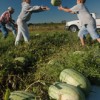 Las Buenas Prácticas Agrícolas (BPA) y las Buenas Prácticas de Manejo (BPM) abarcan los procedimientos generales que los productores, empacadores y procesadores de frutas y verduras frescas deben seguir para garantizar la seguridad de sus productos. Las BPA son usadas antes de la cosecha (es decir, en el campo), mientras que las BPM se utilizan luego de la cosecha, incluyendo el empaque y envío. Esta serie se centra en aspectos específicos del programa de BPA y cómo se relacionan con los cultivos y las prácticas de la Florida.
Las Buenas Prácticas Agrícolas (BPA) y las Buenas Prácticas de Manejo (BPM) abarcan los procedimientos generales que los productores, empacadores y procesadores de frutas y verduras frescas deben seguir para garantizar la seguridad de sus productos. Las BPA son usadas antes de la cosecha (es decir, en el campo), mientras que las BPM se utilizan luego de la cosecha, incluyendo el empaque y envío. Esta serie se centra en aspectos específicos del programa de BPA y cómo se relacionan con los cultivos y las prácticas de la Florida.
This series of fact sheets was written by Federico G. Caro, Alexandra Chang, Renée Goodrich-Schneider, y Keith R. Schneider, and published by the UF Department of Food Science and Human Nutrition, February 2013.
http://edis.ifas.ufl.edu/topic_series_spa_food_safety_on_the_farm
- Sanidad en las Instalaciones de Empaque (FSHN1205S/FS219)
http://edis.ifas.ufl.edu/fs219 - Salud e Higiene de los Trabajadores (FSHN1010S/FS220)
http://edis.ifas.ufl.edu/fs220 - Sanidad en el Campo (FSHN1012S/FS221)
http://edis.ifas.ufl.edu/fs221
Tips for Integrating Land and Wildlife Management: Deer in Ranchlands (WEC330/UW375)
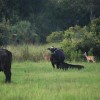 In addition to having generally low-quality foods, ranchlands often have a low diversity of food sources, further reducing the quality of habitat for deer. Ranchland management for deer should therefore focus on providing a diversity of abundant, high-quality foods. This 2-page fact sheet provides some deer habitat improvement tips that focus primarily on raising the quality of deer forage but that also will help you grow better cover by improving plant diversity and productivity. Written by William M. Giuliano, John M. Olson, and Cailey Thomas, and published by the UF Department of Wildlife Ecology and Conservation, January 2013.
In addition to having generally low-quality foods, ranchlands often have a low diversity of food sources, further reducing the quality of habitat for deer. Ranchland management for deer should therefore focus on providing a diversity of abundant, high-quality foods. This 2-page fact sheet provides some deer habitat improvement tips that focus primarily on raising the quality of deer forage but that also will help you grow better cover by improving plant diversity and productivity. Written by William M. Giuliano, John M. Olson, and Cailey Thomas, and published by the UF Department of Wildlife Ecology and Conservation, January 2013.
http://edis.ifas.ufl.edu/uw375
Nematode Management for Golf Courses in Florida (ENY008/IN124)
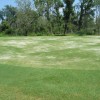 Of all the pests that commonly affect golf course turf in Florida, nematodes are probably the least understood and most difficult to manage. Nematode problems are more common and more severe in Florida than in most other states because our climate and soils provide a perfect habitat for many of the most destructive nematode species. This 8-page fact sheet explains what plant-parasitic nematodes are, how they affect turf, how to tell if they are a problem, and how to manage them. Written by William T. Crow, and published by the UF Department of Entomology and Nematology, January 2013.
Of all the pests that commonly affect golf course turf in Florida, nematodes are probably the least understood and most difficult to manage. Nematode problems are more common and more severe in Florida than in most other states because our climate and soils provide a perfect habitat for many of the most destructive nematode species. This 8-page fact sheet explains what plant-parasitic nematodes are, how they affect turf, how to tell if they are a problem, and how to manage them. Written by William T. Crow, and published by the UF Department of Entomology and Nematology, January 2013.
http://edis.ifas.ufl.edu/in124
Natural Area Weeds: Skunkvine (Paederia foetida) (SSAGR80/WG208)
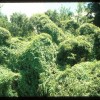 Native to eastern and southern Asia, skunkvine is an invasive plant species introduced to the USDA Field Station near Brooksville before 1897. It has been included on the Florida Exotic Pest Plant Council List of Invasive Species as a Category I, defined as “species that are invading and disrupting native plant communities in Florida.” It was added to the Florida Noxious Weed List in 1999, making it illegal to possess, move, or release in Florida. This 3-page fact sheet was written by K. A. Langeland, R. K. Stocker, and D. M. Brazis, and published by the UF Department of Agronomy, February 2013.
Native to eastern and southern Asia, skunkvine is an invasive plant species introduced to the USDA Field Station near Brooksville before 1897. It has been included on the Florida Exotic Pest Plant Council List of Invasive Species as a Category I, defined as “species that are invading and disrupting native plant communities in Florida.” It was added to the Florida Noxious Weed List in 1999, making it illegal to possess, move, or release in Florida. This 3-page fact sheet was written by K. A. Langeland, R. K. Stocker, and D. M. Brazis, and published by the UF Department of Agronomy, February 2013.
http://edis.ifas.ufl.edu/wg208
A Postharvest Fruit Rot Caused by Alternaria sp. on Imported Plum Tomatoes in South Florida (PP303)
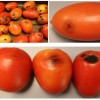 Florida’s deep-water ports are ideal for importing many fruits and vegetables, including tomatoes, by ship from the Caribbean as well as Central and South American production areas. These imports are often strictly regulated for pests, but some pathogens still escape quarantine. This 3-page fact sheet describes a postharvest problem on plum tomatoes that were imported from Mexico through South Florida in 2010. Alternaria sp. was isolated from lesions on diseased fruits, pathogenicity tests were conducted on healthy fruits, and symptoms identical to the originally submitted samples were developed. Written by Zelalem Mersha, Shouan Zhang,and Jerry A. Bartz, and published by the UF Department of Plant Pathology, January 2013.
Florida’s deep-water ports are ideal for importing many fruits and vegetables, including tomatoes, by ship from the Caribbean as well as Central and South American production areas. These imports are often strictly regulated for pests, but some pathogens still escape quarantine. This 3-page fact sheet describes a postharvest problem on plum tomatoes that were imported from Mexico through South Florida in 2010. Alternaria sp. was isolated from lesions on diseased fruits, pathogenicity tests were conducted on healthy fruits, and symptoms identical to the originally submitted samples were developed. Written by Zelalem Mersha, Shouan Zhang,and Jerry A. Bartz, and published by the UF Department of Plant Pathology, January 2013.
http://edis.ifas.ufl.edu/pp303
Pretreatment of Ligno-cellulosic Biomass for Biofuels and Bioproducts (AE495)
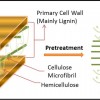 This 4-page fact sheet discusses bioethanol as a renewable form of energy, explaining the importance of using ligno-cellulosic biomass to produce biofuels. It describes the pretreatment step in producing biofuels and the need for more research into this step so that ligno-cellulosic biofuels can be produced cheaply and efficiently at a commercial scale. Written by Zhaohui Tong, Nusheng Cheng, and Pratap Pullammanappallil, and published by the UF Department of Agricultural and Biological Engineering, January 2013.
This 4-page fact sheet discusses bioethanol as a renewable form of energy, explaining the importance of using ligno-cellulosic biomass to produce biofuels. It describes the pretreatment step in producing biofuels and the need for more research into this step so that ligno-cellulosic biofuels can be produced cheaply and efficiently at a commercial scale. Written by Zhaohui Tong, Nusheng Cheng, and Pratap Pullammanappallil, and published by the UF Department of Agricultural and Biological Engineering, January 2013.
http://edis.ifas.ufl.edu/ae495
Freshwater Turtles of Belize (WEC328/UW373)
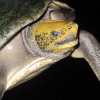 Belize, a country rich in natural resources and diverse wildlife, is home to nine species of freshwater turtles. Among these is the critically endangered hicatee, which has been eliminated in most of its range as a result of hunting and habitat loss. Freshwater turtles live in rivers, creeks, and lagoons, and build their nests on the banks. They eat a variety of plants, aquatic vegetation, and fruits. However, little is known about Belize’s unique turtle species. This 2-page fact sheet will help people identify, understand, and conserve these treasured resources. Written by Venetia Briggs, Lauren Watine, Dustin Smith, Robin Bijlani, Rebecca Harvey, William Giuliano, and Frank Mazzotti, and published by the UF Department of Wildlife Ecology and Conservation, January 2013.
Belize, a country rich in natural resources and diverse wildlife, is home to nine species of freshwater turtles. Among these is the critically endangered hicatee, which has been eliminated in most of its range as a result of hunting and habitat loss. Freshwater turtles live in rivers, creeks, and lagoons, and build their nests on the banks. They eat a variety of plants, aquatic vegetation, and fruits. However, little is known about Belize’s unique turtle species. This 2-page fact sheet will help people identify, understand, and conserve these treasured resources. Written by Venetia Briggs, Lauren Watine, Dustin Smith, Robin Bijlani, Rebecca Harvey, William Giuliano, and Frank Mazzotti, and published by the UF Department of Wildlife Ecology and Conservation, January 2013.
http://edis.ifas.ufl.edu/uw373
Pureed Foods and Fiber (FSHN12-16/FS209)
 People with swallowing problems who require a puréed diet may not meet their recommended intake of fiber. But puréed diets can be planned to achieve fiber recommendations by choosing higher-fiber puréed foods often. And a variety of fiber ingredients are available that can be added to puréed foods. This 4-page fact sheet was written by Wendy J. Dahl, and published by the UF Department of Food Science and Human Nutrition, January 2013.
People with swallowing problems who require a puréed diet may not meet their recommended intake of fiber. But puréed diets can be planned to achieve fiber recommendations by choosing higher-fiber puréed foods often. And a variety of fiber ingredients are available that can be added to puréed foods. This 4-page fact sheet was written by Wendy J. Dahl, and published by the UF Department of Food Science and Human Nutrition, January 2013.
http://edis.ifas.ufl.edu/fs209
Save a Child: How to Identify and Report Child Abuse (FCS2119/HE855)
 People who work with children, parents, and the general public may at some point in their lives and careers have to report child abuse. It is important that you be able to recognize the symptoms of abuse and be able to contact the appropriate authorities. By reporting abuse, you may save a child’s life or prevent serious injury. This 4-page fact sheet discusses child abuse laws and procedures for reporting abuse. It also contains information about different types of abuse and how to identify abused or neglected children. Characteristics listed here are general and intended as guidelines. A child or family may exhibit many warning signs of abuse, though no abuse has occurred or ever will occur. Written by Andrew E. Toelle and Kate Fogarty, and published by the UF Department of Family Youth and Community Sciences, January 2013.
People who work with children, parents, and the general public may at some point in their lives and careers have to report child abuse. It is important that you be able to recognize the symptoms of abuse and be able to contact the appropriate authorities. By reporting abuse, you may save a child’s life or prevent serious injury. This 4-page fact sheet discusses child abuse laws and procedures for reporting abuse. It also contains information about different types of abuse and how to identify abused or neglected children. Characteristics listed here are general and intended as guidelines. A child or family may exhibit many warning signs of abuse, though no abuse has occurred or ever will occur. Written by Andrew E. Toelle and Kate Fogarty, and published by the UF Department of Family Youth and Community Sciences, January 2013.
http://edis.ifas.ufl.edu/he855
Datos sobre las vitaminas (FCS8808S/FY1343)
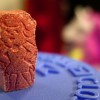 Las vitaminas son compuestos químicos que el cuerpo utiliza de muchas maneras. Nosotros necesitamos obtener las vitaminas en nuestra dieta porque nuestros cuerpos no las pueden crear. Existen 13 tipos de vitaminas que han sido identificadas como nutrientes importantes para los humanos. This 3-page fact sheet was written by R. Elaine Turner and Wendy J. Dahl, and published by the UF Department of Family Youth and Community Sciences, November 2012.
Las vitaminas son compuestos químicos que el cuerpo utiliza de muchas maneras. Nosotros necesitamos obtener las vitaminas en nuestra dieta porque nuestros cuerpos no las pueden crear. Existen 13 tipos de vitaminas que han sido identificadas como nutrientes importantes para los humanos. This 3-page fact sheet was written by R. Elaine Turner and Wendy J. Dahl, and published by the UF Department of Family Youth and Community Sciences, November 2012.
http://edis.ifas.ufl.edu/fy1343
Datos sobre la niacina (FCS8669S/FY1340)
 La niacina es una de las vitaminas del grupo B (vitamina B3). Nuestro cuerpo necesita la niacina para usar los carbohidratos, las grasas y las proteínas. La niacina también se necesita para reparar el ADN y para el uso normal del calcio en el cuerpo. This 2-page fact sheet was written by R. Elaine Turner y Wendy J. Dahl, and published by the UF Department of Family Youth and Community Sciences, November 2012.
La niacina es una de las vitaminas del grupo B (vitamina B3). Nuestro cuerpo necesita la niacina para usar los carbohidratos, las grasas y las proteínas. La niacina también se necesita para reparar el ADN y para el uso normal del calcio en el cuerpo. This 2-page fact sheet was written by R. Elaine Turner y Wendy J. Dahl, and published by the UF Department of Family Youth and Community Sciences, November 2012.
http://edis.ifas.ufl.edu/fy1340
Facts about Niacin (FCS8669/FY212)
 Niacin is one of the B vitamins (vitamin B3). Our bodies need niacin to use the energy in carbohydrates, fats, and proteins. Niacin also is needed for DNA repair and for the normal use of calcium in the body. This 2-page fact sheet was written by R. Elaine Turner and Wendy J. Dahl, and published by the UF Department of Family Youth and Community Sciences, November 2012.
Niacin is one of the B vitamins (vitamin B3). Our bodies need niacin to use the energy in carbohydrates, fats, and proteins. Niacin also is needed for DNA repair and for the normal use of calcium in the body. This 2-page fact sheet was written by R. Elaine Turner and Wendy J. Dahl, and published by the UF Department of Family Youth and Community Sciences, November 2012.
http://edis.ifas.ufl.edu/fy212
Being Smart About Gluten and Gluten-Free Issues, Part 1: What Are the Health Concerns Surrounding Gluten? (WC133/WC133)
 Are you an inquisitive consumer who asks what the big deal is about gluten free? Ask no more; this article is the first in a three–part series about gluten. This 7-page fact sheet identifies health conditions surrounding the ingestion of gluten. The resources used in this article are research and evidence based and/or peer reviewed to provide straightforward and simple information about a few gluten-related topics. Written by Abigail Dicks, Amy Harder, and Amy Simonne, and published by the UF Department of Agricultural Education and Communication, January 2013.
Are you an inquisitive consumer who asks what the big deal is about gluten free? Ask no more; this article is the first in a three–part series about gluten. This 7-page fact sheet identifies health conditions surrounding the ingestion of gluten. The resources used in this article are research and evidence based and/or peer reviewed to provide straightforward and simple information about a few gluten-related topics. Written by Abigail Dicks, Amy Harder, and Amy Simonne, and published by the UF Department of Agricultural Education and Communication, January 2013.
http://edis.ifas.ufl.edu/wc133
Tips for Integrating Land and Wildlife Management: Deer in Forests (WEC329/UW374)
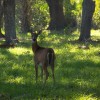 Prized by hunters and wildlife enthusiasts alike, white-tailed deer are a popular species found throughout Florida. As such, they are often the focus of management for landowners, managers, and lessees who want to improve deer populations while maintaining other land uses such as timber production. This 2-page fact sheet provides some deer habitat improvement tips that focus primarily on raising the quality of deer forage but that also will help you grow better cover by improving plant diversity and productivity. Written by William M. Giuliano, John M. Olson, and Cailey Thomas, and published by the UF Department of Wildlife Ecology and Conservation, January 2013.
Prized by hunters and wildlife enthusiasts alike, white-tailed deer are a popular species found throughout Florida. As such, they are often the focus of management for landowners, managers, and lessees who want to improve deer populations while maintaining other land uses such as timber production. This 2-page fact sheet provides some deer habitat improvement tips that focus primarily on raising the quality of deer forage but that also will help you grow better cover by improving plant diversity and productivity. Written by William M. Giuliano, John M. Olson, and Cailey Thomas, and published by the UF Department of Wildlife Ecology and Conservation, January 2013.
http://edis.ifas.ufl.edu/uw374
Tips for Integrating Land and Wildlife Management: Quail and Timber (WEC331/UW376)
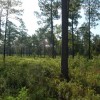 In Florida, changes in forest management practices during the past 50+ years have led to declines in quail habitat and populations. Important changes involve the use of fire and conversion of native forests to commercial pine plantations. A lack of fire and other disturbance has often led to closed-canopy forests with dense undergrowth that lack important quail habitat components. This 2-page fact sheet provides several quail habitat improvement tips that focus on diversifying the plant species and structural composition and increasing early successional communities dominated by herbaceous plants. Written by William M. Giuliano and Lauren Watine, and published by the UF Department of Wildlife Ecology and Conservation, January 2013.
In Florida, changes in forest management practices during the past 50+ years have led to declines in quail habitat and populations. Important changes involve the use of fire and conversion of native forests to commercial pine plantations. A lack of fire and other disturbance has often led to closed-canopy forests with dense undergrowth that lack important quail habitat components. This 2-page fact sheet provides several quail habitat improvement tips that focus on diversifying the plant species and structural composition and increasing early successional communities dominated by herbaceous plants. Written by William M. Giuliano and Lauren Watine, and published by the UF Department of Wildlife Ecology and Conservation, January 2013.
http://edis.ifas.ufl.edu/uw376
Environmental Education Resources from Federal and State Agencies (FOR100/FR128)
 Going on a field trip? Want a spiffy new poster? Looking for a guest speaker? Or do you just need to know more about wildland fire, endangered species, coastal management, or invasive exotics? Many agencies are available to provide information, share resources, support field trips, and contribute to your environmental education programming. This 8-page fact sheet explores federal and state agencies in Florida with major educational resources. Written by Martha C. Monroe and Alison W. Bowers, and published by the UF Department of School of Forest Resources and Conservation, December 2012.
Going on a field trip? Want a spiffy new poster? Looking for a guest speaker? Or do you just need to know more about wildland fire, endangered species, coastal management, or invasive exotics? Many agencies are available to provide information, share resources, support field trips, and contribute to your environmental education programming. This 8-page fact sheet explores federal and state agencies in Florida with major educational resources. Written by Martha C. Monroe and Alison W. Bowers, and published by the UF Department of School of Forest Resources and Conservation, December 2012.
http://edis.ifas.ufl.edu/fr128